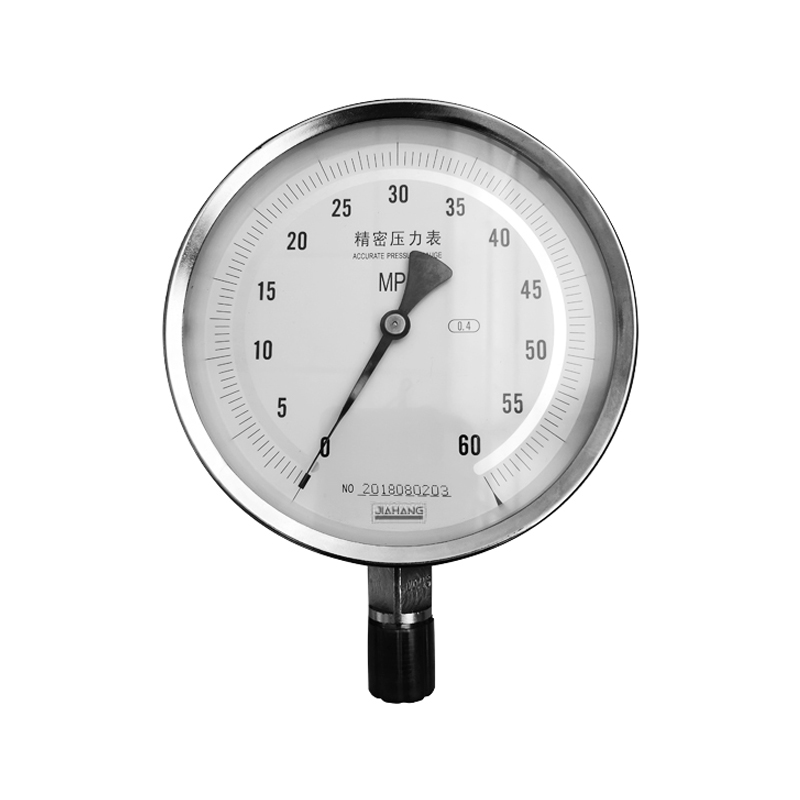
aug . 19, 2024 19:55 Back to list
Differential Pressure Gauge with Switch for Accurate Monitoring and Control
Differential Pressure Gauge with Switch A Key Instrument in Industrial Applications
In various industrial processes, maintaining the correct pressure differential is crucial for operational efficiency and safety. A differential pressure gauge with a switch is an essential instrument used in many applications to measure the difference in pressure between two points, triggering alerts when the pressure exceeds predefined limits. This article outlines the significance, functionality, and applications of these versatile gauges.
Understanding Differential Pressure Gauges
A differential pressure gauge measures the difference in pressure between two points in a system. Unlike standard pressure gauges that measure absolute pressure, differential pressure gauges are designed to evaluate variations in pressure that can indicate process inefficiencies or potential equipment failures. These gauges are vital in industries such as oil and gas, water treatment, HVAC systems, and pharmaceutical manufacturing.
How Differential Pressure Gauges Work
The operational principle of a differential pressure gauge is straightforward. The device consists of two pressure ports, with one port connected to the upstream side (higher pressure) and the other to the downstream side (lower pressure). The gauge measures the difference between these two pressures and displays the result on a dial, digital readout, or transmit this data to a control system.
In the case of differential pressure gauges equipped with switches, the device can also monitor pressure changes and trigger an alarm or initiate a shutdown when the pressure difference surpasses a specified threshold
. This feature significantly enhances process safety and prevents potential hazards caused by pressure anomalies.famous wika differential pressure gauge with switch

Applications of Differential Pressure Gauges with Switches
1. Filtration Systems In filtration processes, differential pressure gauges with switches are employed to monitor the pressure drop across filters. When the filters become clogged, the pressure difference increases, which activates the switch to alert operators for maintenance or change of filters. This helps in maintaining optimal filtration efficiency and prolonging the lifespan of the equipment.
2. HVAC Systems Differential pressure gauges are vital in heating, ventilation, and air conditioning (HVAC) systems. They ensure that airflows in ducts and filters remain within the design parameters. Any irregularity can be detected through the pressure difference, allowing for timely adjustments and preventing system breakdown.
3. Hydraulic Systems In hydraulic applications, maintaining the correct pressure differential is necessary for the safe operation of hydraulic pumps and actuators. Differential pressure gauges with switches can help monitor the system closely, ensuring that pressure levels remain safe and effective.
4. Process Industries Chemical, petrochemical, and food processing industries widely use these instruments to monitor various conditions. For instance, maintaining the correct pressure across reactors, heat exchangers, and pipelines is essential for quality control and to prevent accidents.
Conclusion
Differential pressure gauges with switches play a vital role in enhancing the safety, efficiency, and reliability of industrial processes. By providing critical information about pressure differentials, these instruments enable operators to make informed decisions and take corrective actions swiftly. As industries continue to evolve and embrace automation, the importance of advanced monitoring tools like differential pressure gauges will only grow, underscoring their significance in achieving operational excellence.
-
High-Precision 5 Valve Manifold Differential Pressure Gauge Suppliers
NewsApr.29,2025
-
High-Precision Diaphragm Vacuum Pressure Gauges Manufacturers & Quotes
NewsApr.29,2025
-
Omega Differential Pressure Gauges High Accuracy & Durability
NewsApr.28,2025
-
Low Pressure Differential Pressure Gauges Precision Solutions & Quotes
NewsApr.28,2025
-
Digital Diaphragm Pressure Gaauge Precision Measurement & OEM Quotes
NewsApr.28,2025
-
Differential Pressure Gauge China Price High-Accuracy & Best Quotes
NewsApr.28,2025
